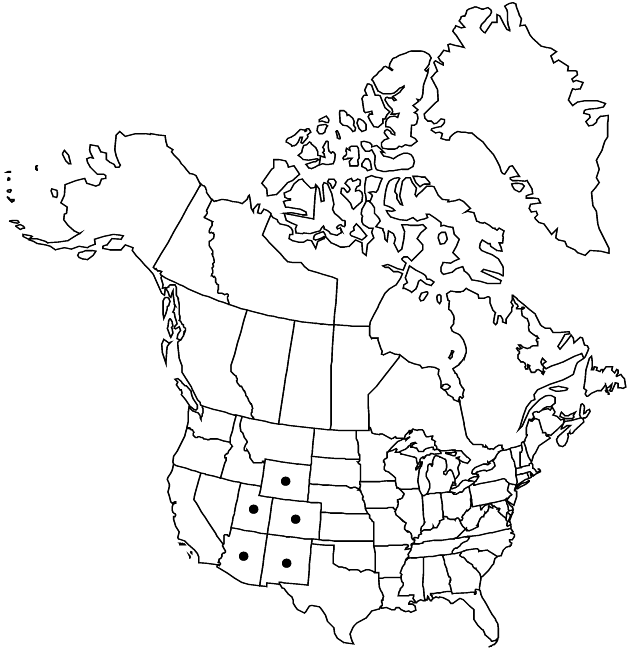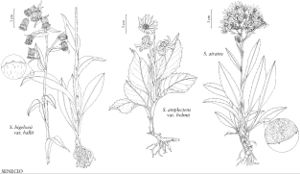Difference between revisions of "Senecio bigelovii var. hallii"
Proc. Acad. Nat. Sci. Philadelphia 15: 67. 1864.
IllustratedEndemic
Synonyms: Ligularia bigelovii subsp. hallii (A. Gray) W. A. Weber Senecio accedens Greene
Treatment appears in FNA Volume 20. Treatment on page 549.
imported>Volume Importer |
imported>Volume Importer |
||
| Line 60: | Line 60: | ||
|publication year=1864 | |publication year=1864 | ||
|special status=Illustrated;Endemic | |special status=Illustrated;Endemic | ||
| − | |source xml=https:// | + | |source xml=https://bitbucket.org/aafc-mbb/fna-data-curation/src/2e0870ddd59836b60bcf96646a41e87ea5a5943a/coarse_grained_fna_xml/V19-20-21/V20_1207.xml |
|tribe=Asteraceae tribe Senecioneae | |tribe=Asteraceae tribe Senecioneae | ||
|genus=Senecio | |genus=Senecio | ||
Latest revision as of 19:59, 5 November 2020
Herbage often floccose-tomentose, especially among heads and on abaxial faces of leaves, sometimes unevenly glabrescent. Leaves: blades of proximal usually tapered to petioles; mid and distal leaves weakly, if at all, clasping. Heads (1–)3–7. Phyllaries mostly 21, (7–)8–12 mm.
Phenology: Flowering summer.
Habitat: Grassy damp or drying sites in open conifer-dominated areas
Elevation: 1700–3500 m
Distribution

Ariz., Colo., N.Mex., Utah, Wyo.
Discussion
Selected References
None.
Lower Taxa
None.
